Survey for species of butterfly
The recent survey conducted by our scientists on the species of butterflies from the hills of Matheran has been activated as after a long period of 125 years they’ve found 77 new butterfly species in the vicinity of Matheran.
The research would not have been successful without the trained etymologists, scientists, researchers, and naturalists. Around 140 species have been found in total since 1894. The place was revisited and explored frequently during all the seasons.
‘Finding the forgotten gems: Revisiting the butterflies of Matheran after 125 years’, a research paper by scientists from the Bombay Natural History Society (BNHS) published in the Biodiversity Data Journal. Gives us a glimpse of all the variation.
-
Matheran
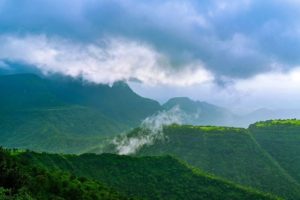
Matheran – Hill Station
A hill station located in Kajrat Tahsil near Mumbai. It is one of the heavenly places to visit. The place is enriched with a beautiful environment, ecosystem, dense forest, Mountains, vegetation, wildlife, and many viewpoints. The site is 80 km away from Mumbai.
It’s the smallest in India but Asia’s only automobile-free hill station. The rock type is mainly composed of Deccan trap. The place has an area of 214.74 square kilometers.
Wildlife and vegetation

The place is surrounded by evergreen forests and receives heavy rainfall. The species of monkey, butterfly, Wild boar, barking deer, mongoose, and many more.
Composition of species of butterfly(at Matheran):
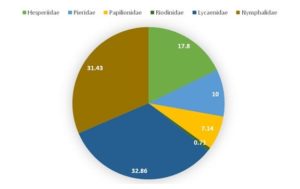
17.8% of Hesperiidae, 0.73% of Riodinidae, 31.43%of Nymphalidae, 10 % of Pieridae, 7.14 % of Papilionoidae and 32. 86 % of Lycaenidae.
Uncovering the research

The speed in the research area of the butterflies has been slowed down from over a century. The field observations need to be researched extensively on many occurring changes including early stages, seasonal population dynamics, community dynamics, reproductive stages, and many more.
The image is a roadmap that explains the biology of species of butterfly. Seasonal variation in butterfly diversity has been observed.
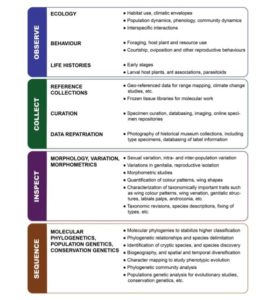
According to the table published by Biological Data Journal the zones or the highlighted areas where they researched during the whole survey were-Simpson Tank, Charlotte Lake, Panorama Point, Garbett Point, Rustomjee Point, One Tree Hill Point, Neral-Matheran Rail Route, and Neral Matheran Roadway.
The richness of the species found was calculated using the data collected from all the eight sites. According to the Biodiversity Data Journal “A total of 140 species of butterflies belonging to six families were recorded from Matheran,
India. This list includes 77 new records for Matheran.”
Methods used to identify them :
- Colour codes: Colour codes were used to name the species and since the observation was made from their behavior, traits, and features researched from all the four seasons, The color codes were red, green and indigo for summer winter, and monsoon respectively.
- Seasonal variation: According to the reports the maximum number of species was recorded during the winters and minimum during the monsoon. Hesperiidae is the family whose species were recorded the highest i.e. 23, but they were found during monsoon. While the species from the Nymphalidae family had an equal percentage in the course of all four seasons.
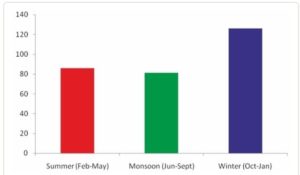
- Spatial Turnover: Nymphalidae and Lycaenidae were found to have a more diverse family of species. For the Nymphalidae family similarity between the species was the highest, though with different patterns. For the family of Lycaenidae’s highest differences were observed. They had more site-specific species composition.
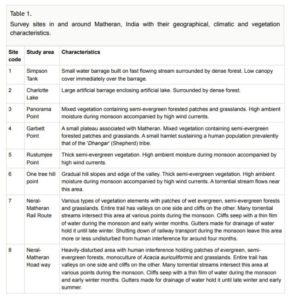
Activities of butterfly:
- There was not any definite pattern which they followed but all were all doing activities like mud puddling, basking, or feeding the nectar.
Many species have been scheduled under the wildlife protection, act of 1972.
Some of the species are:
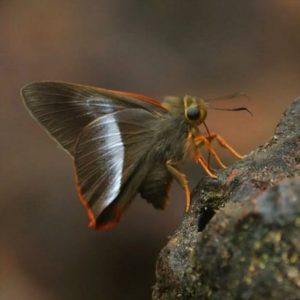
- The Bibasis sena is the scientific name of the butterfly species and the common name is orange-tailed awlet. They belonged to the family of Hesperiidae. Mostly they were involved in the activity of nectaring(sucking nectar from the flowers). They appeared mostly during monsoon.
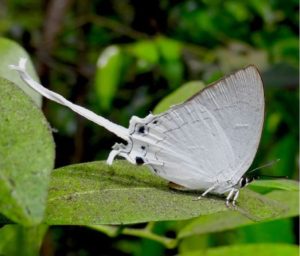
2. Cheritra Freja belonged to the Lycaenidae family. They are basically white in colour. The activities they were involved in were basking and nectaring. They were found during monsoon and winter seasons respectively.
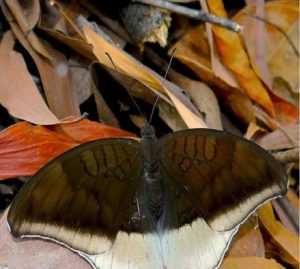
3. Tanaecia lepidea with a common name: Grey Count.
Identification traits: They are dark brown with a pale grey border. apex. Female, larger and are dull-colored than male, They are found during Monsoon and winter season.
Habitat and activity: The species was found at doing activities such as mud puddling or basking
or feeding on tree sap, carcasses, etc. They are found in the forest edges.
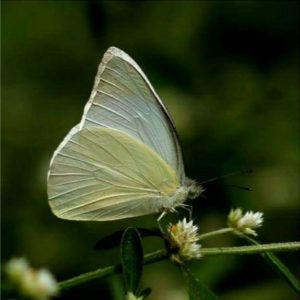
4. Appias Albina,Common name: Common Albatross. They belong to the family of Pieridae
Identification traits: They have dark dusting and outer edge, but that’s not definite. The seasonal variation
is seen within the species. Wingspan 60–75 mm.
The butterfly is seen during Monsoon and winter.
The species are observed in Forested patches while nectaring is the activity they often do.
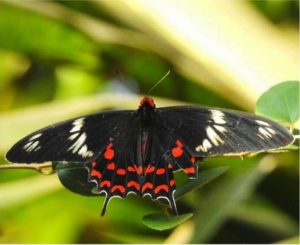
5. Pachliopta aristolochiae, Common name: Common Rose.
Identification traits: They are pale greyish butterfly with white patches. They have bright red or
brownish-red spots on their wings and have red color. Wingspan 80–110 mm.
Mostly seen during the winter season
The species was observed in Forest edges, scrubs, and grasslands while nectaring is the activity they often do.
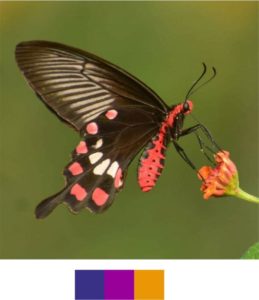
6. Spalgis epius, Common name: Apefly.
Identification traits: HW Tailless. UN with several fine wavy vertical lines. Male FW has
an acute apex and straight outer edge. Female has a rounded outer edge. Caterpillars feed on
mealybugs. Wingspan 20–30 mm.
They show up during winter season in the forest patches and feed themselves on bird droppings.
Conclusion:
Many more butterfly species have been found in that area and out of 140 78 species were recorded in 1894. The survey took almost a decade to be completed and reach its research. Butterfly diversity is has been used by the ecologists to study habitat loss, climate change, and habitat fragmentation and it represents healthy ecosystems.
Read also: https://theqna.org/top-10-places-to-visit-in-mangalore/
Thanks:)